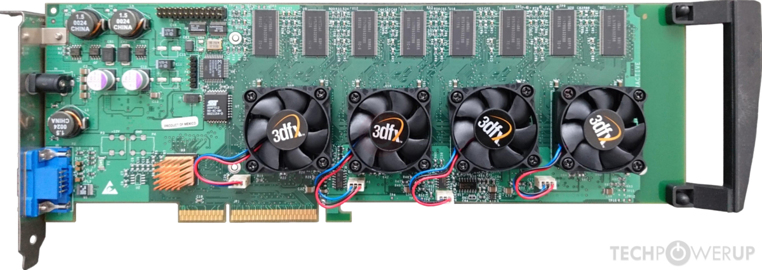- Joined
- Oct 9, 2007
- Messages
- 47,485 (7.49/day)
- Location
- Hyderabad, India
| System Name | RBMK-1000 |
|---|---|
| Processor | AMD Ryzen 7 5700G |
| Motherboard | ASUS ROG Strix B450-E Gaming |
| Cooling | DeepCool Gammax L240 V2 |
| Memory | 2x 8GB G.Skill Sniper X |
| Video Card(s) | Palit GeForce RTX 2080 SUPER GameRock |
| Storage | Western Digital Black NVMe 512GB |
| Display(s) | BenQ 1440p 60 Hz 27-inch |
| Case | Corsair Carbide 100R |
| Audio Device(s) | ASUS SupremeFX S1220A |
| Power Supply | Cooler Master MWE Gold 650W |
| Mouse | ASUS ROG Strix Impact |
| Keyboard | Gamdias Hermes E2 |
| Software | Windows 11 Pro |
A Chinese tech forum ChipHell user who goes by zcjzcj11111 sprung up a fascinating take on what the next-generation AMD "Navi 48" GPU could be, and put their imagination on a render. Apparently, the "Navi 48," which powers AMD's series-topping performance-segment graphics card, is a dual chiplet-based design, similar to the company's latest Instinct MI300 series AI GPUs. This won't be a disaggregated GPU such as the "Navi 31" and "Navi 32," but rather a scale-out multi-chip module of two GPU dies that can otherwise run on their own in single-die packages. You want to call this a multi-GPU-on-a-stick? Go ahead, but there are a couple of changes.
On AMD's Instinct AI GPUs, the chiplets have full cache coherence with each other, and can address memory controlled by each other. This cache coherence makes the chiplets work like one giant chip. In a multi-GPU-on-a-stick, there would be no cache coherence, the two dies would be mapped by the host machine as two separate devices, and then you'd be at the mercy of implicit or explicit multi-GPU technologies for performance to scale. This isn't what's happening on AI GPUs—despite multiple chiplets, the GPU is seen by the host as a single PCI device with all its cache and memory visible to software as a contiguously addressable block.

We imagine the "Navi 48" is modeled along the same lines as the company's AI GPUs. The graphics driver sees this package as a single GPU. For this to work, the two chiplets are probably connected by Infinity Fabric Fanout links—an interconnect with a much higher amount of bandwidth than a serial bus like PCIe. This is probably needed for the cache coherence to be effective. The "Navi 44" is probably just one of these chiplets sitting its own package.
In the render, the substrate and package is made to resemble that of the "Navi 32," which tends to agree with the theory that "Navi 48" will be a performance segment GPU, and a successor to the "Navi 32," "Navi 22," and "Navi 10," rather than being a successor to enthusiast-segment GPUs like the "Navi 21" and "Navi 31." This much was made clear by AMD in its recent interviews with the media.
Do we think the ChipHell rumor is plausible? Absolutely, considering nobody took the very first such renders about the AM5 package having an oddly-shaped IHS seriously. The "Navi 48" being a chiplet-based GPU is something within character for a company like AMD, which loves chiplets, MCMs, and disaggregated devices.
View at TechPowerUp Main Site | Source
On AMD's Instinct AI GPUs, the chiplets have full cache coherence with each other, and can address memory controlled by each other. This cache coherence makes the chiplets work like one giant chip. In a multi-GPU-on-a-stick, there would be no cache coherence, the two dies would be mapped by the host machine as two separate devices, and then you'd be at the mercy of implicit or explicit multi-GPU technologies for performance to scale. This isn't what's happening on AI GPUs—despite multiple chiplets, the GPU is seen by the host as a single PCI device with all its cache and memory visible to software as a contiguously addressable block.

We imagine the "Navi 48" is modeled along the same lines as the company's AI GPUs. The graphics driver sees this package as a single GPU. For this to work, the two chiplets are probably connected by Infinity Fabric Fanout links—an interconnect with a much higher amount of bandwidth than a serial bus like PCIe. This is probably needed for the cache coherence to be effective. The "Navi 44" is probably just one of these chiplets sitting its own package.
In the render, the substrate and package is made to resemble that of the "Navi 32," which tends to agree with the theory that "Navi 48" will be a performance segment GPU, and a successor to the "Navi 32," "Navi 22," and "Navi 10," rather than being a successor to enthusiast-segment GPUs like the "Navi 21" and "Navi 31." This much was made clear by AMD in its recent interviews with the media.
Do we think the ChipHell rumor is plausible? Absolutely, considering nobody took the very first such renders about the AM5 package having an oddly-shaped IHS seriously. The "Navi 48" being a chiplet-based GPU is something within character for a company like AMD, which loves chiplets, MCMs, and disaggregated devices.
View at TechPowerUp Main Site | Source










